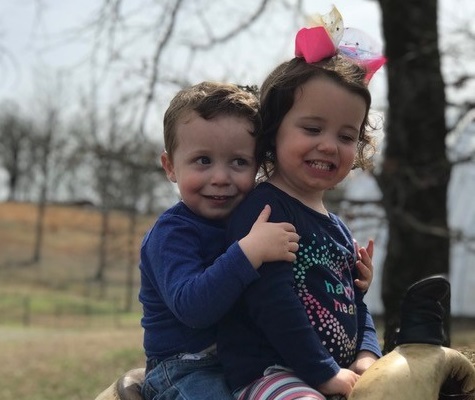Startling these twins could put their hearts at risk
By American Heart Association News

Katie and Lance Cox were watching TV one evening, their infant twins Carter and John asleep nearby, when Katie dropped the remote control. As it clattered across the floor, the couple froze, staring terrified at one another.
They weren't worried about the remote. They were concerned that the noise would startle their babies to death.
That's what life is like when doctors say your newborns have only a 50 percent chance of surviving to their first birthday.
Carter and John were each born with a heart defect called long QT syndrome that can cause the heart to go into an irregular rhythm and could even lead to sudden cardiac arrest.
"So, we've got to keep things calm and quiet around the house," Katie said.
That means no playing peek-a-boo, Katie and Lance turning their phones to silent and telling friends and family not to ring the doorbell at their home in Heber Springs, Arkansas.
They also put box fans in their rooms as white noise to mask any loud, sudden noises.
The term "long QT" refers to an abnormal pattern seen on an electrocardiogram, a test that detects and records the heart's electrical activity. With each heartbeat, an electrical signal spreads from the top of the heart to the bottom. As it travels, the signal causes the heart to contract and pump blood. An EKG records electrical signals as they move through the heart. Data from the EKG are mapped on a graph, and each heartbeat is mapped as five distinct electrical waves: P, Q, R, S and T.
The day after Carter was born, her heart rate dropped precipitously, so the doctors gave her an EKG. The results led to her diagnosis of long QT syndrome. Because the condition is often hereditary, they also gave John an EKG. He had the condition, too.
"The doctor told us, 'Take them home and love them as best you can. And do everything you can to keep them alive,'" Katie said.
The twins were in the hospital for 10 days, but before they were discharged, everyone in their extended family had to learn CPR.
Now 3, they still don't go anywhere without their own AED, or automated external defibrillator, that could jump-start a stopped or irregularly beating heart. Katie carries two – one for each child.
Katie said she was so on edge during those first weeks that she spent most of the night staring at the baby monitor, listening to make sure they were still breathing.
"You have to stop," Lance told her. "If something's going to happen, it will happen. God has a plan for them."

The twins are now happy and relatively healthy. They love riding their sister Halle's rodeo horse Gunner, who is especially gentle.
They take a beta blocker to help shorten the QT interval and potassium supplements to keep it from getting longer.
Although the twins are thriving, they're still medically fragile, said Dr. Srikant Das, their pediatric cardiac electrophysiologist at Arkansas Children's Hospital in Little Rock.
"They came through their first year unscathed and haven't had any major problems since then," he said. "But they'll never be completely out of danger and it's likely they'll be on medications their whole lives."
That's why Lance and Katie hope the research they help fund with their donations to the American Heart Association may someday lead to even better treatments for long QT syndrome.
"And once the kids get older, we'll start participating in the association's Heart Walks for sure," she said. "That's a big deal to me."
Stories From the Heart chronicles the inspiring journeys of heart disease and stroke survivors, caregivers and advocates.
If you have questions or comments about this story, please email [email protected].





